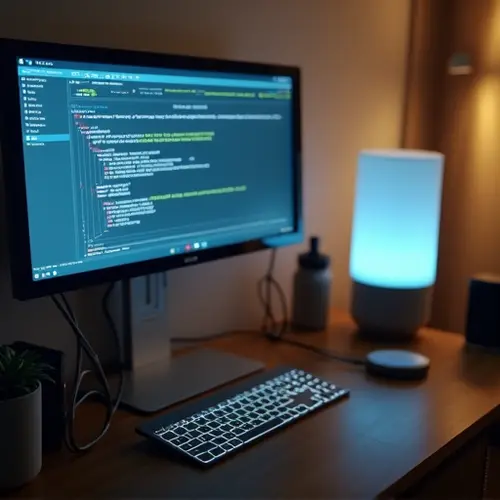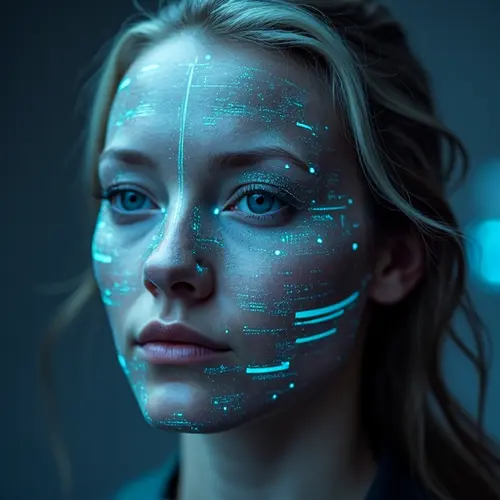
The Rise of Voice-First Computing
Imagine a world where keyboards, touchscreens, and monitors become relics of the past. That future is rapidly approaching as voice-only interfaces transform how we interact with technology. By 2025, voice assistants like Alexa, Google Assistant, and Siri have evolved beyond simple command responders into sophisticated conversational partners capable of handling complex tasks through natural dialogue.
Beyond Convenience: A Fundamental Shift
This isn't just about convenience - it's a complete paradigm shift. Major tech companies are investing heavily in voice AI, with Amazon recently announcing Project VoiceScape, an initiative to create screen-free devices for home, work, and vehicle environments. Meanwhile, Google's DeepMind division has made breakthroughs in contextual understanding, allowing AI to maintain coherent conversations spanning multiple topics and extended durations.
Accessibility is driving significant adoption. Voice interfaces have become essential tools for visually impaired users, with screen reader usage increasing by 78% since 2023 according to WebAIM's latest report. But the appeal extends further - busy professionals, multitasking parents, and even gamers are embracing hands-free interaction.
Voice Commerce: The New Shopping Frontier
The retail sector illustrates this transformation dramatically. Voice commerce transactions reached $40 billion globally in Q1 2025, despite early skepticism. Walmart's voice-ordering system now handles 15% of their e-commerce volume, while food delivery services like Uber Eats report 30% of orders coming through voice commands.
The Challenges Ahead
However, significant hurdles remain:
- Payment Security: How do you securely authenticate voice transactions?
- Ambient Noise: Current systems struggle in noisy environments
- Privacy Concerns: 62% of users express discomfort with always-listening devices
- Error Correction: Fixing mistakes without visual feedback remains challenging
Generative AI offers promising solutions. New models can detect vocal patterns to prevent impersonation fraud, while adaptive noise-cancellation algorithms improve accuracy in crowded spaces. The EU's recently passed Voice Privacy Act sets new standards for consent-based audio data collection.
Beyond Assistants: The Screenless Ecosystem
Voice technology is expanding beyond smart speakers into unexpected domains:
Automotive Integration
Major automakers like Tesla and Ford have unveiled voice-only control systems for vehicle functions. Tesla's Model S Plaid now features "Conversational Mode" - drivers can adjust climate, navigation, and entertainment through natural dialogue without taking their eyes off the road.
Healthcare Applications
Voice-based health monitoring shows particular promise. Mayo Clinic's pilot program uses vocal biomarkers to detect Parkinson's disease with 89% accuracy. Patients simply speak into their devices daily, and AI analyzes subtle voice changes invisible to human perception.
Workplace Transformation
Microsoft's VoiceWork platform enables completely screen-free document creation. Users can draft emails, build spreadsheets, and even code through voice commands. Early adopters report 40% reduced eye strain, though typing purists remain skeptical about complex tasks.
The Screenless Future: Utopia or Dystopia?
As screens fade from prominence, cultural implications emerge. Some psychologists warn about "cognitive offloading" - our decreasing ability to visualize concepts without visual aids. Conversely, linguists celebrate the return to oral tradition and storytelling.
Tech ethicists debate the societal impact. Will voice-only access widen the digital divide? Can we prevent voice profiling from becoming a new form of discrimination? These questions remain unanswered as we stand at the threshold of a screenless world.
What's certain is that the voice revolution isn't coming - it's already here. As natural language processing reaches human-level understanding by 2028 (per Gartner predictions), our relationship with technology will fundamentally transform. The keyboard's days are numbered, and the screen's twilight has begun.

 Nederlands
Nederlands
 English
English
 Deutsch
Deutsch
 Français
Français
 Español
Español
 Português
Português


